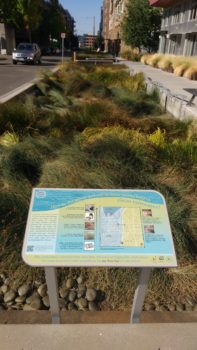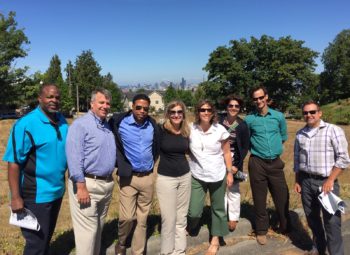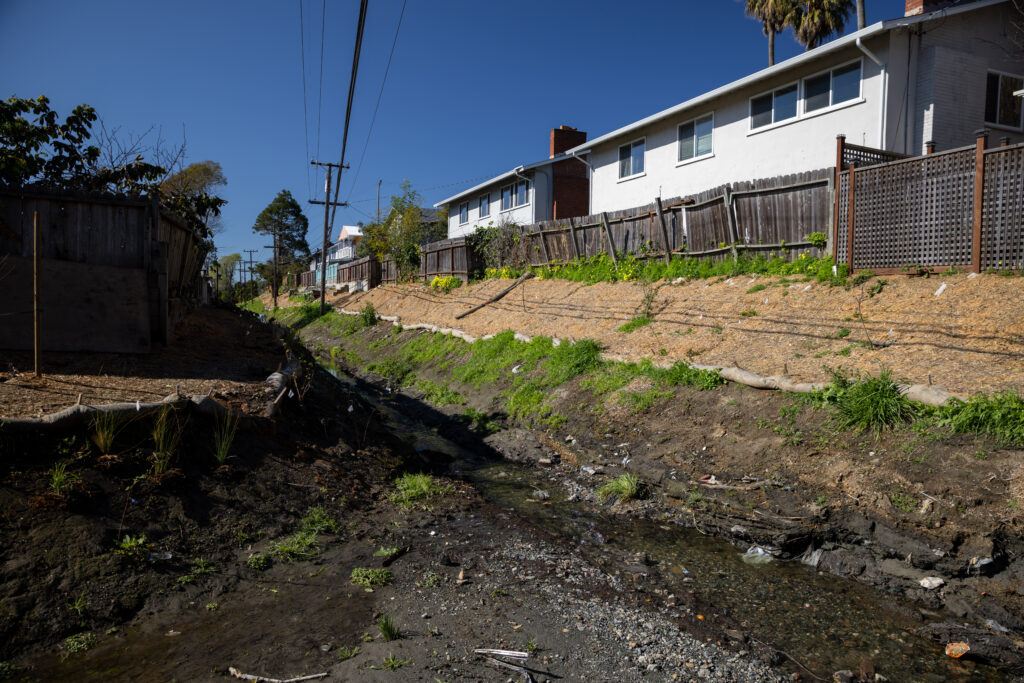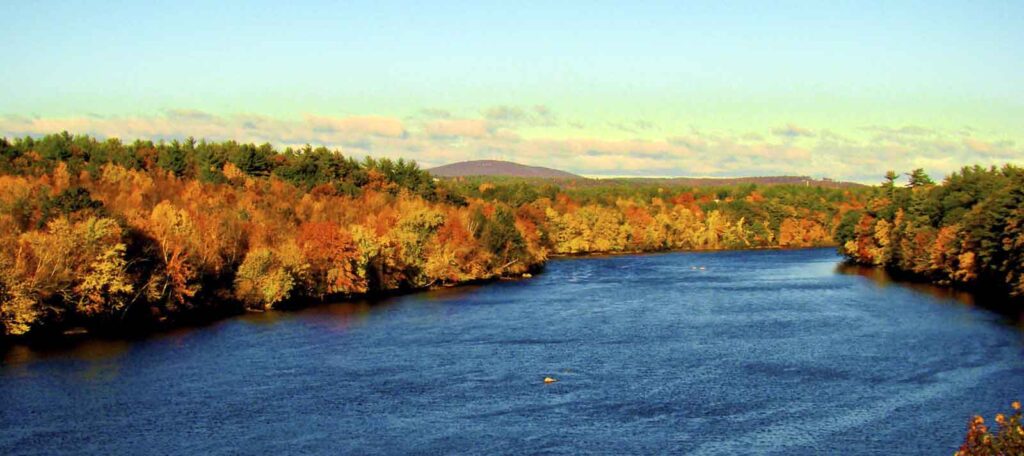Lessons from the Rainy City
Reflections on an American Rivers-sponsored peer exchange from Clayton County, Georgia to Seattle, Washington to learn about implementing green stormwater infrastructure from national leaders.
I’ve never been so excited to visit a place famous for rain as I was last week in Seattle, learning about green stormwater infrastructure (GSI) from some of the nation’s leaders. If you’re scratching your head about “GSI”, just know that it’s an approach to wet weather that mimics nature to soak up, evaporate, transpire, or recycle stormwater. In short, GSI means catching the rain with plants, not pipes.

GSI instructional placards in Seattle | Jeremy Diner
I was surprised to learn that Metro Atlanta gets about 30% more rain than Metro Seattle, is 40% bigger, has 50% more people, and in 2015, Atlanta even had more wet days than Seattle. So what makes Seattle national leaders when arguably, we have a bigger stormwater problem around Atlanta? That’s what we went to learn.
American Rivers co-sponsored this peer exchange to Seattle, which included our partners at Clayton County Water Authority, their consultants from CH2M, and the Chief Operating Officer from the county. Our goal was to learn strategies and techniques for how to reduce water pollution and flooding with GSI, while simultaneously gaining multiple quality of life and economic benefits.
With over 15 years of experience, Seattle has a lot of success stories. One thing that was immediately clear was the strength of their partnerships. This included partnerships across multiple government departments (with a focus on transportation), as well as extensive partnerships which extend into the non-profit, corporate, and public realms. They also have an iconic water body to rally around protecting: the Puget Sound. While Clayton County’s Flint River may not be as famous as the Puget Sound, it’s certainly a critical Georgian resource, worthy of protection, respect, and long weekends spent paddling.

Group shot of the exchange participants | Lauren Chamblin, CH2M
Another success story is Seattle’s willingness to talk about their failures and lessons learned. It’s not easy to embrace failures, but the rest of us really appreciate not having to make the same mistakes. The main issues we discussed were related to rushing, community engagement, and the equitable distribution of benefits.
At the end of the day, my biggest takeaway was that implementing GSI isn’t rocket science. If there is: 1) political will, 2) decent funding, 3) good relationships across departments, and 4) effective community engagement, then this should be a lot easier than most of the things our government does every day. American Rivers looks forward to supporting Clayton County Water Authority’s effort to green the county, so that we may improve quality of life for residents, grow the local economy, and protect the streams and rivers upon which we rely.



